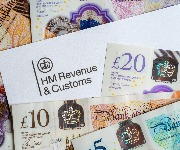What To Do If You Can't Get A 0% Card

If you've been rejected for a 0% credit card, don't panic. Here's how to tackle your debt demons.
This article has already been sent to readers as an 'afternoon' email.
When I write about the pros and cons of 0% balance transfer credit cards, readers often respond by saying `well, I've been rejected for one of these cards - what am I meant to do next?'.
A very fair question - unfortunately, some of the most competitive credit card deals are reserved for people with `excellent' credit ratings.
Here, I'm going to try to provide some answers, and show you how to tackle your debts if you've been rejected for a 0% card.
First things first
Before you do anything else, find out exactly how good (or bad) your credit rating is.
You might have missed that `excellent' rating by a whisker, or you might be miles off. Either way, knowing your exact score will help you decide what to do next.
You can check your credit status for free with this tool from ratings agency Experian. Just make sure you unsubscribe straight afterwards, so you're not charged for ongoing membership.
What's it all about?
Your credit report contains a mass of information collected from different sources. This includes data from banks and building societies, credit card providers, utility providers and mobile phone companies.
It will also note whether or not you're on the electoral roll, have any court judgments against you, or have ever been declared bankrupt.
If you want to find out more about how your credit score is worked out (and what `excellent' really means!) read this article by my colleague Szu Ping Chan.
Don't make things worse
If your credit rating is poor, don't apply for another 0% card, `on the off-chance'. You'll probably make the situation worse.
This is because every credit application you make (whether it's successful or not) is logged on your credit record. If prospective lenders see that you've made several unsuccessful applications, they're likely to deem you a bad or risky borrower - and will be even more reluctant to lend to you.
However - don't pull your hair out just yet. You've still got options.
Clean up your credit rating
There are several things you can do to clean up your rating and make yourself a more attractive candidate for credit:
Electoral roll: If you're not registered on the electoral roll, get it sorted. Lenders use it to check you are who you say you are - so if they're unable to do this, they may reject you automatically.
Factual errors: Go through your rating with a fine tooth comb to weed out any factual errors. These could include:
- ID fraud committed in your name;
- Out-of-date contact details;
- A County Court Judgement not yet registered as having been paid off.
Note of correction: You're allowed to add a 200 word `Notice of Correction' to your record, explaining why you've had credit problems in the past.
If a lender feels that you have a good or understandable reason for past hiccups, they may be more likely to lend to you now. Bereavement, serious illness, redundancy and divorce are all worth mentioning.
Close dormant accounts: If you have a host of dormant accounts or old credit cards that you never use, close some of them down.
`Tidying up' in this way should encourage companies to lend to you, because the total amount of credit available to you will shrink, and your borrowing capacity will seem more proportionate and manageable.
Cut damaging ties: Your irresponsible ex could be ruining your chances of getting credit. Make sure you no longer have a `financial association' as far as your credit report is concerned, because his or her debts could be damaging your rating.
Build helpful ones: If you've never borrowed any money, you might expect your credit rating to be immaculate. In fact, lenders want to see evidence that you're able to repay money you've borrowed - so if your record is a blank canvas, you may be rejected straight away.
If you need to build up a history of borrowing (and paying back) there are certain credit cards aimed specifically at you.
The Barclaycard Initial card, for example, is a good option if you want to push your credit score from `good' to `excellent'. It offers a credit limit of £2,000, and has a typical APR of 27.9%.
The idea is that you build up a record of sensible credit card spending, which will push up your credit score and enable you to apply for 0% cards in the future.
However, with this sort of card, it's crucial you completely clear the balance every month. Don't get caught paying the whopping interest rate!
Certain credit cards in this niche category are even designed for people with serious credit problems, or no credit history at all.
To find out more about these, read How To Build A Excellent Credit History, by my colleague Jane Baker.
Once you're whiter-than-white
So, you've built, buffed and polished that credit rating until it gleams. What do you do now? Well, a 0% balance transfer card isn't your only option.
A lifetime balance transfer card could be an equally good tool to tackle your debt. In a nutshell, transfer your balance to one of these cards and you'll pay a low rate of interest for as long as it takes you to clear it.
Read this article to find out how you can use one of these cards to beat the recession.
Just remember that you'll still be paying interest, so try and get your balance cleared as soon as possible. Once you've got your credit record looking whiter-than-white, you'll want it to stay that way!
Most Recent
Comments
Be the first to comment
Do you want to comment on this article? You need to be signed in for this feature








